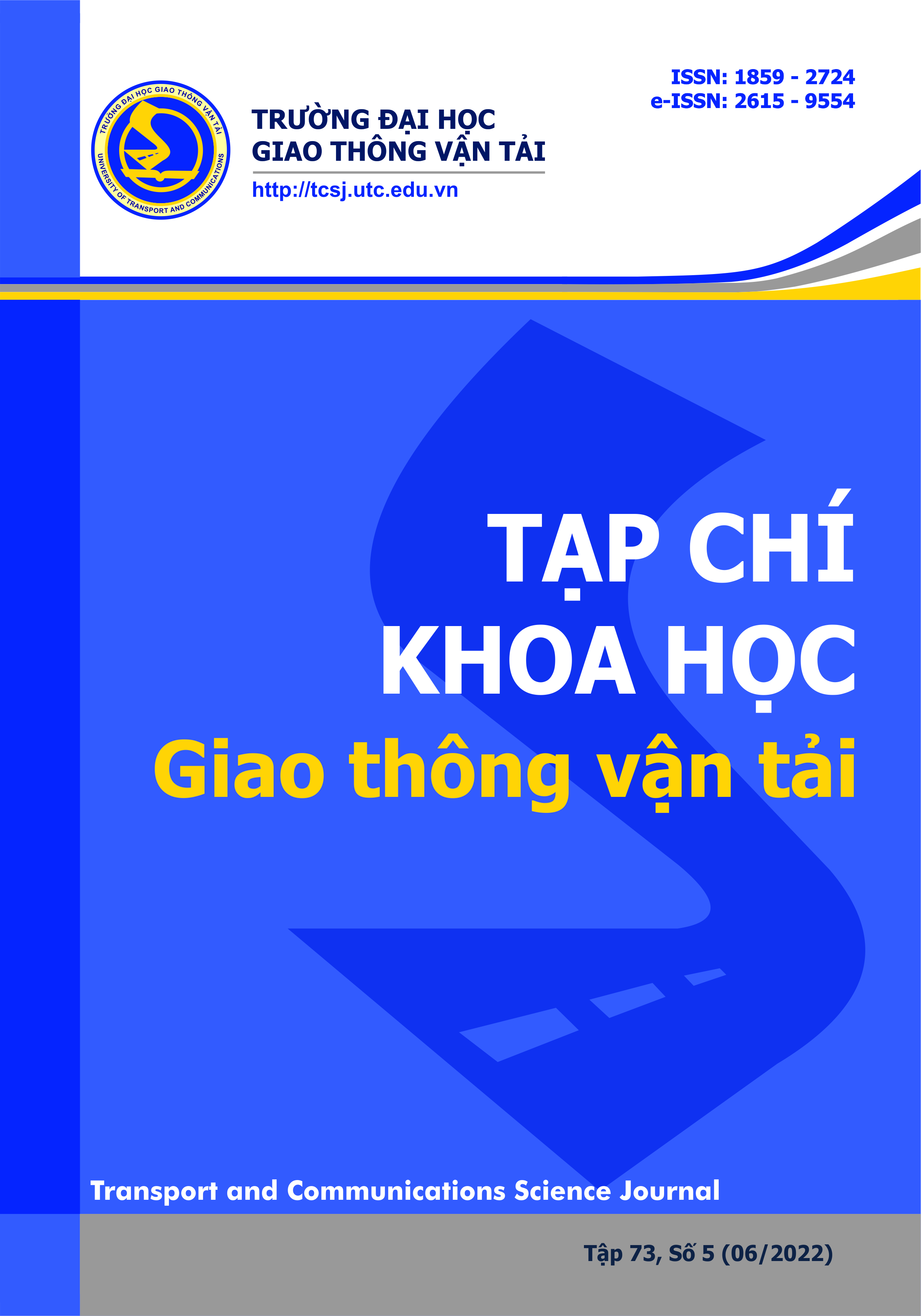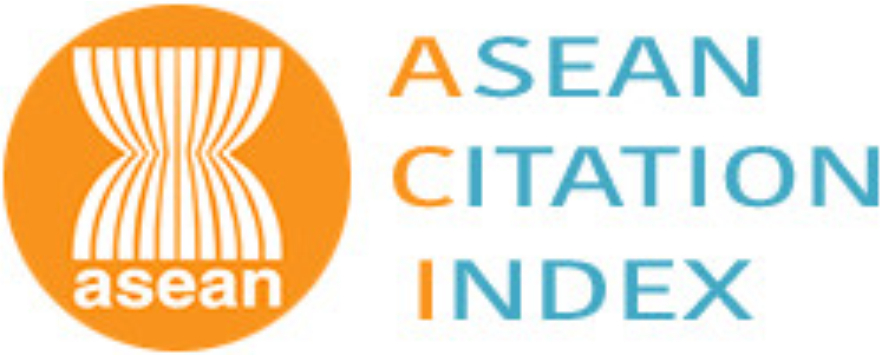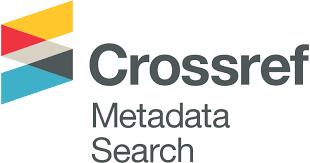Nghiên cứu đặc tính cháy hcci trên động cơ diesel 1 xi lanh - BD178F(E) khi thay đổi tỷ số nén bằng phần mềm AVL BOOST
Email:
khuongha82@utc.edu.vn
Từ khóa:
cháy do nén hỗn hợp đồng nhất (HCCI), tỷ số nén, AVL – Boost
Tóm tắt
Động cơ hoạt động theo nguyên lý cháy do nén hỗn hợp đồng nhất đang nhận được rất nhiều sự quan tâm do có ưu điểm lớn là giảm được phần lớn phát thải PM và NOx trong khi các thông số có ích và chỉ thị vẫn tương đương động cơ nguyên bản, do đó nghiên cứu chuyển đổi động cơ diesel truyền thống sang hoạt động theo nguyên lý HCCI là rất cần thiết. Trong nghiên cứu này trình bày kết quả ảnh hưởng của tỷ số nén tới đặc tính cháy của động cơ HCCI trên phần mềm mô phỏng AVL – BOOST. Động cơ được sử dụng cho nghiên cứu là động cơ một xylanh Kubota BD178F(E) với đường nạp đã được cải tiến. Các chế độ làm việc của động cơ mô phỏng là: Tốc độ từ 1200 vg/ph đến 3200 vg/ph; Các chế độ tải: 10%, 20%, 30% và 50%; Tỷ số nén giảm từ 20 xuống 18,1; 17; 15,4 và 13,5. Kết quả mô phỏng cho thấy: Giảm tỷ số nén động cơ vẫn làm việc theo nguyên lý HCCI, thời điểm bắt đầu cháy muộn dần, không nên giảm tỷ số nén nhỏ hơn 13,5Tài liệu tham khảo
[1]. Noguchi, M., Tanaka., et al, A study on gasoline engine combustion by observation on intermediate reactive products during combustion, 1979 SAE International Off-Highway and Powerplant Congress and Exposition, (1979) 790840. https://doi.org/10.4271/790840
[2]. 0. Onishi, S., et al, Active thermo-atmosphere combustion (ATAC) – A new combustion process for internal combustion engines, SAE paper (1979) 790507. https://doi.org/10.4271/790501.
[3]. Hyung Jun Kim, Kwan Soo Lee, Chang Sik Lee, A study on the reduction of exhaust emissions through HCCI combustion by using a narrow spray angle and advanced injection timing in a DME engine, Fuel Processing Technology, 92 (2011) 1756–1763. https://doi.org/10.1016/j.fuproc.2011.04.024
[4]. Suyin Gan, Hoon Kiat Ng, Kar Mun Pang, Homogeneous Charge Compression Ignition (HCCI) combustion: Implementation and effects on pollutants in direct injection diesel engines, Applied Energy, 88 (2011) 559–5. https://doi.org/10.1016/j.apenergy.2010.09.005Get rights and content
[5]. Tuan Le Anh, Vinh Nguyen Duy, Ha Khuong Thi, Hoi Nguyen Xa, Experimental Investigation on Establishing the HCCI Process Fueled by N-Heptane in a Direct Injection Diesel Engine at Different Compression Ratios, Sustainability, 10 (2018) 11, 3878. https://doi.org/10.3390/su10113878
[6]. Z. Wang, S. Shuai, J. Wang, G. Tian, A computational study of direct injection gasoline HCCI engine with secondary injection, Fuel, 85 (2006) 1831–41. https://doi.org/10.1016/j.fuel.2006.02.013
[7]. Can Cinar, Ozer Can, Fatih Sahin, H. Serdar Yucesu, Effects of premixed diethyl ether (DEE) on combustion and exhaust emissions in a HCCI-DI diesel engine, Applied Thermal Engineering, 30 (2010) 360–365. https://doi.org/10.1016/j.applthermaleng.2009.09.016
[8]. H.J. Curran, S.L. Fischer, F.L. Dryer, The reaction kinetics of dimethyl ether. II: Lowtemperature oxidation in flow reactors, Int J Chem Kinet, 32 (2000) 741–59. https://doi.org/10.1002/1097-4601(2000)32:12<741::AID-KIN2>3.0.CO;2-9
[9]. Kitae Yeom, Jinyoung Jang, Choongsik Bae, Homogeneous charge compression ignition of LPG and gasoline using variable valve timing in an engine, Fuel, 86 (2007) 494–503. https://doi.org/10.1016/j.fuel.2006.07.027
[10]. S. Swami Nathan, J.M. Mallikarjuna, A. Ramesh, An experimental study of the biogas–diesel HCCI mode of engine operation, Energy Conversion and Management, 51 (2010) 1347–1353. https://doi.org/10.1016/j.enconman.2009.09.008Get rights and content
[11]. Toshio Shudo, Yosuke Shima, Tatsuya Fujii, Production of dimethyl ether and hydrogen by methanol reforming for an HCCI engine system with waste heat recovery – Continuous control of fuel ignitability and utilization of exhaust gas heat, international journal of hydrogen energy, 34 (2009) 7638 – 7647. https://doi.org/10.1016/j.ijhydene.2009.06.077
[12]. Akhilendra Pratap Singh, Avinash Kumar Agarwal, Effect of intake charge temperature and EGR on Biodiesel fulled HCCI engine, SAE technical Paper, (2016) 2016-28-0257. https://doi.org/10.4271/2016-28-0257
[13]. AVL–List GmbH, BOOST Users Guide, Hans–List–Platz 1, 2011, A–8020 Graz, Austria.
[2]. 0. Onishi, S., et al, Active thermo-atmosphere combustion (ATAC) – A new combustion process for internal combustion engines, SAE paper (1979) 790507. https://doi.org/10.4271/790501.
[3]. Hyung Jun Kim, Kwan Soo Lee, Chang Sik Lee, A study on the reduction of exhaust emissions through HCCI combustion by using a narrow spray angle and advanced injection timing in a DME engine, Fuel Processing Technology, 92 (2011) 1756–1763. https://doi.org/10.1016/j.fuproc.2011.04.024
[4]. Suyin Gan, Hoon Kiat Ng, Kar Mun Pang, Homogeneous Charge Compression Ignition (HCCI) combustion: Implementation and effects on pollutants in direct injection diesel engines, Applied Energy, 88 (2011) 559–5. https://doi.org/10.1016/j.apenergy.2010.09.005Get rights and content
[5]. Tuan Le Anh, Vinh Nguyen Duy, Ha Khuong Thi, Hoi Nguyen Xa, Experimental Investigation on Establishing the HCCI Process Fueled by N-Heptane in a Direct Injection Diesel Engine at Different Compression Ratios, Sustainability, 10 (2018) 11, 3878. https://doi.org/10.3390/su10113878
[6]. Z. Wang, S. Shuai, J. Wang, G. Tian, A computational study of direct injection gasoline HCCI engine with secondary injection, Fuel, 85 (2006) 1831–41. https://doi.org/10.1016/j.fuel.2006.02.013
[7]. Can Cinar, Ozer Can, Fatih Sahin, H. Serdar Yucesu, Effects of premixed diethyl ether (DEE) on combustion and exhaust emissions in a HCCI-DI diesel engine, Applied Thermal Engineering, 30 (2010) 360–365. https://doi.org/10.1016/j.applthermaleng.2009.09.016
[8]. H.J. Curran, S.L. Fischer, F.L. Dryer, The reaction kinetics of dimethyl ether. II: Lowtemperature oxidation in flow reactors, Int J Chem Kinet, 32 (2000) 741–59. https://doi.org/10.1002/1097-4601(2000)32:12<741::AID-KIN2>3.0.CO;2-9
[9]. Kitae Yeom, Jinyoung Jang, Choongsik Bae, Homogeneous charge compression ignition of LPG and gasoline using variable valve timing in an engine, Fuel, 86 (2007) 494–503. https://doi.org/10.1016/j.fuel.2006.07.027
[10]. S. Swami Nathan, J.M. Mallikarjuna, A. Ramesh, An experimental study of the biogas–diesel HCCI mode of engine operation, Energy Conversion and Management, 51 (2010) 1347–1353. https://doi.org/10.1016/j.enconman.2009.09.008Get rights and content
[11]. Toshio Shudo, Yosuke Shima, Tatsuya Fujii, Production of dimethyl ether and hydrogen by methanol reforming for an HCCI engine system with waste heat recovery – Continuous control of fuel ignitability and utilization of exhaust gas heat, international journal of hydrogen energy, 34 (2009) 7638 – 7647. https://doi.org/10.1016/j.ijhydene.2009.06.077
[12]. Akhilendra Pratap Singh, Avinash Kumar Agarwal, Effect of intake charge temperature and EGR on Biodiesel fulled HCCI engine, SAE technical Paper, (2016) 2016-28-0257. https://doi.org/10.4271/2016-28-0257
[13]. AVL–List GmbH, BOOST Users Guide, Hans–List–Platz 1, 2011, A–8020 Graz, Austria.
Tải xuống
Chưa có dữ liệu thống kê

Nhận bài
28/04/2022
Nhận bài sửa
10/05/2022
Chấp nhận đăng
08/06/2022
Xuất bản
15/06/2022
Chuyên mục
Công trình khoa học
Kiểu trích dẫn
Khương Thị, H. (1655226000). Nghiên cứu đặc tính cháy hcci trên động cơ diesel 1 xi lanh - BD178F(E) khi thay đổi tỷ số nén bằng phần mềm AVL BOOST. Tạp Chí Khoa Học Giao Thông Vận Tải, 73(5), 540-551. https://doi.org/10.47869/tcsj.73.5.8
Số lần xem tóm tắt
268
Số lần xem bài báo
322









